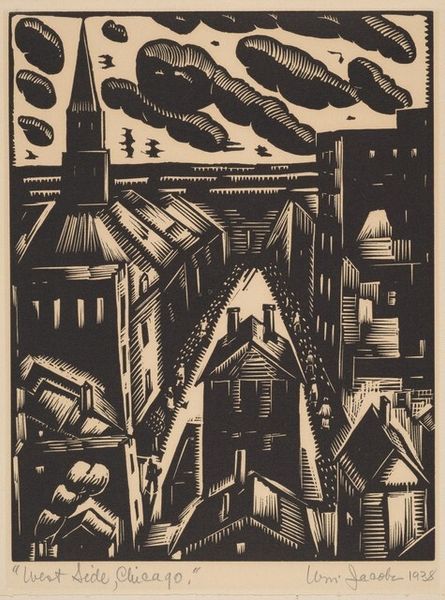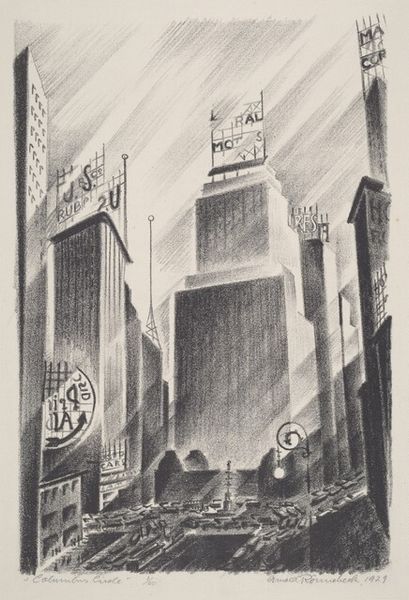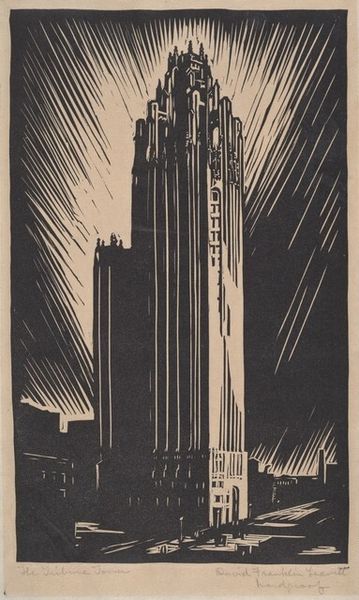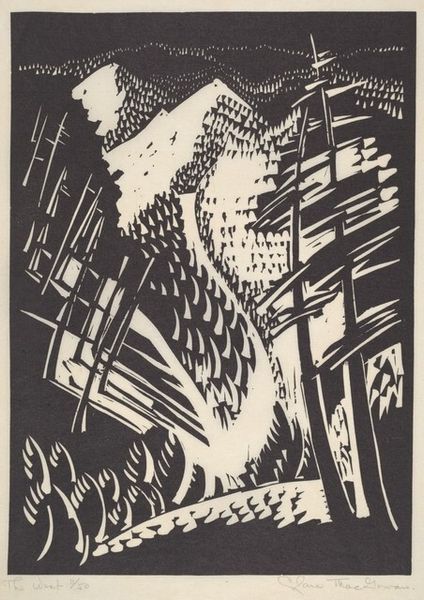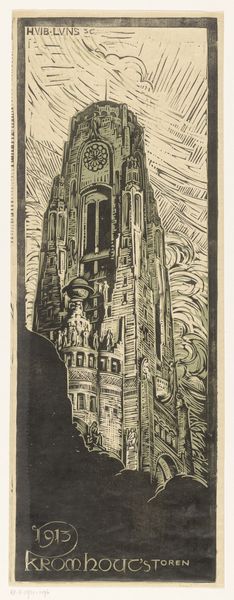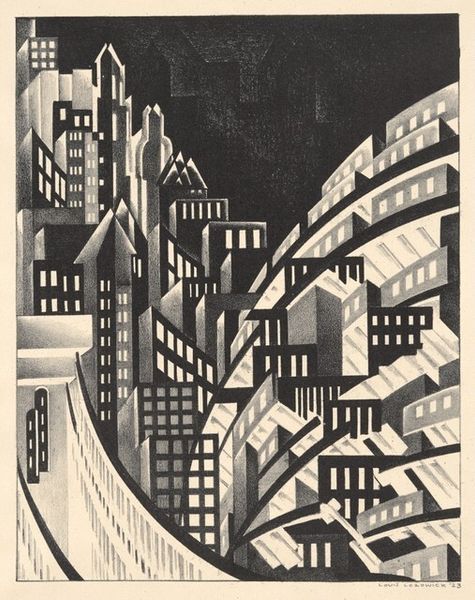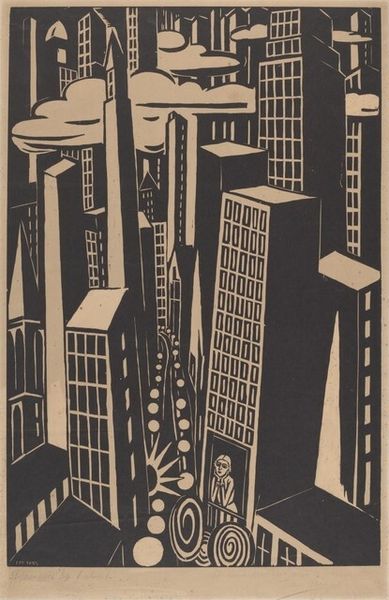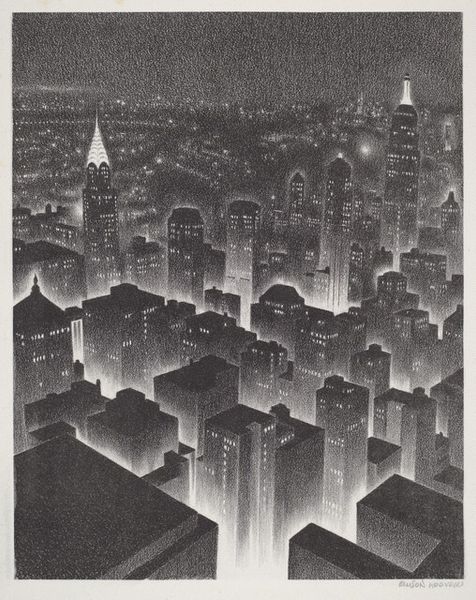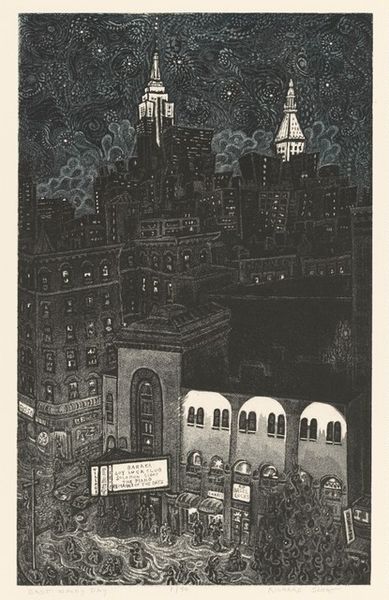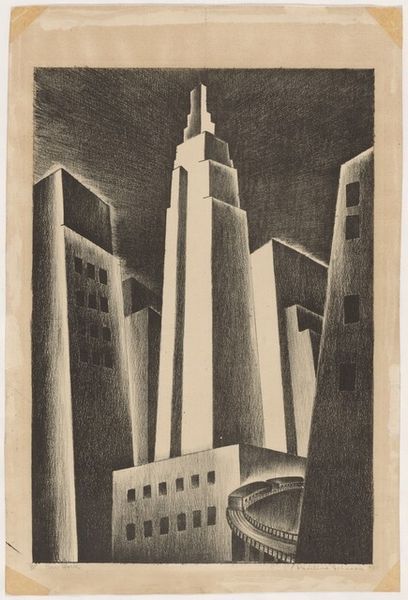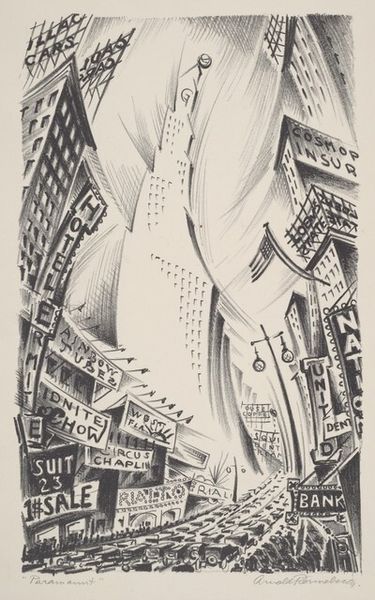
print, woodcut
# print
#
woodcut
#
cityscape
#
realism
Dimensions: image: 254 x 168 mm paper: 305 x 248 mm
Copyright: National Gallery of Art: CC0 1.0
Editor: This is Charles Turzak's "Old Water Tower (Chicago)," created around 1940. It's a woodcut print, rendered in stark black and white. It has such a graphic quality to it, really emphasizing the monumentality of the water tower. What strikes you most about this piece? Curator: The way Turzak deploys the woodcut technique is crucial. The sharp contrasts, those incredibly deliberate lines...they speak to the industrial processes defining Chicago at this time. Think about the labor involved: the artist meticulously carving away at the woodblock, a slow, almost craft-like process, to depict an icon of the modern city. Doesn't that strike you as a fascinating tension? Editor: I see what you mean! The medium itself feels almost at odds with the subject matter. You wouldn't necessarily think of something so "handmade" to represent a bustling cityscape. Curator: Exactly! And notice how the rain, indicated by those diagonal lines, almost dissolves the sharp edges of the buildings. This speaks to the environmental realities – pollution, weather – that shaped the everyday experience of urban dwellers. It acknowledges that even monuments exist within a material world subject to constant change. Consider, too, who would have purchased this print? Was it meant for a middle class eager to own an original image? Editor: That's interesting...a tangible piece of Chicago history accessible to a wider audience than, say, an oil painting of the same scene. The print medium changes the economic context of art consumption. Curator: Precisely. Turzak's choice wasn't simply aesthetic; it had implications for the artwork's accessibility and its place within the broader cultural landscape. Now what do you take from that looming CHEVROLET sign on the left? Editor: Another tension! The old water tower, representing Chicago's history, set alongside this symbol of industrial capitalism and personal transport. A real mix of then and now. I hadn't considered all these different social dimensions embedded in the work before. Curator: Exactly! Focusing on the materials and processes can unlock incredible insights.
Comments
No comments
Be the first to comment and join the conversation on the ultimate creative platform.

